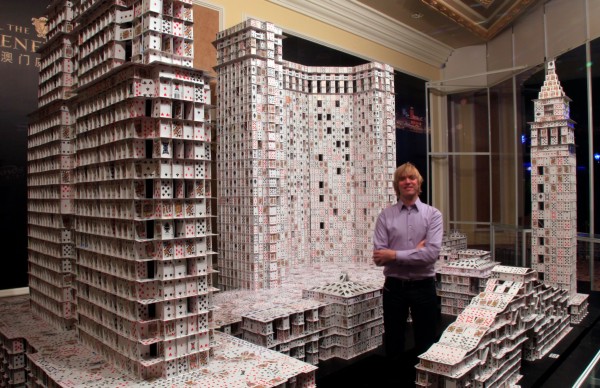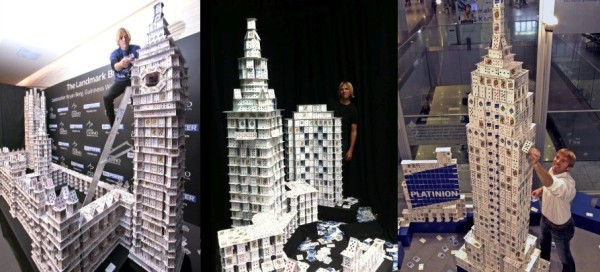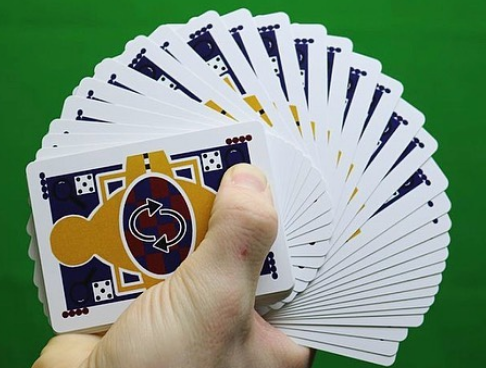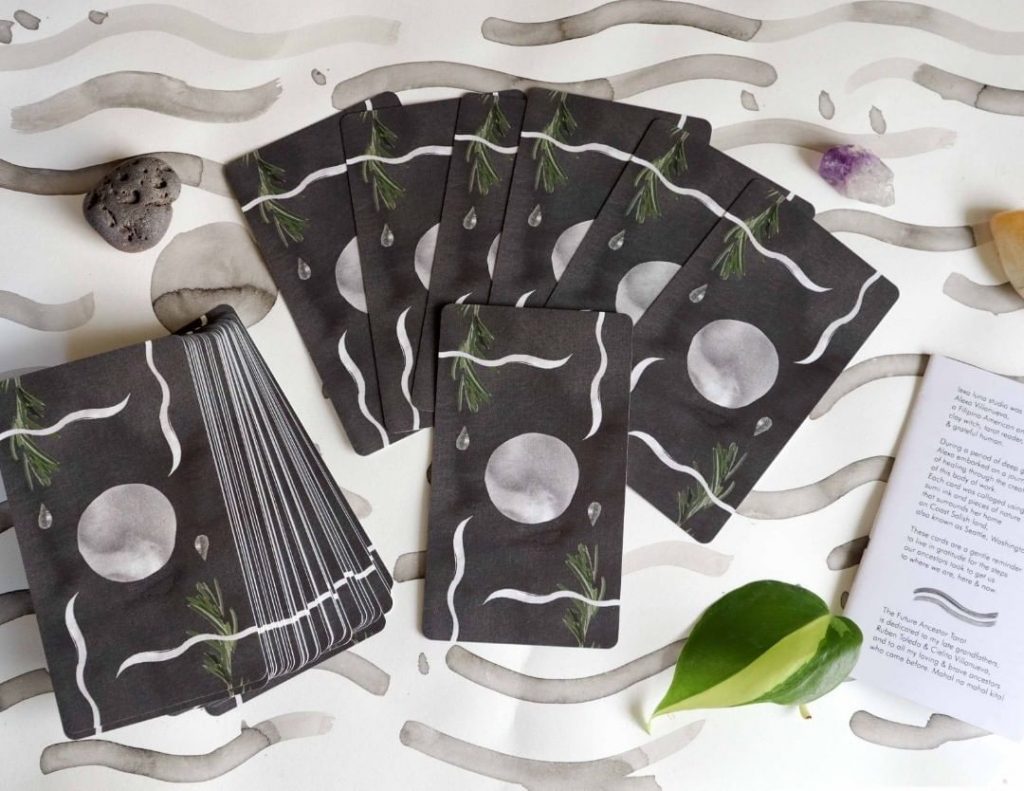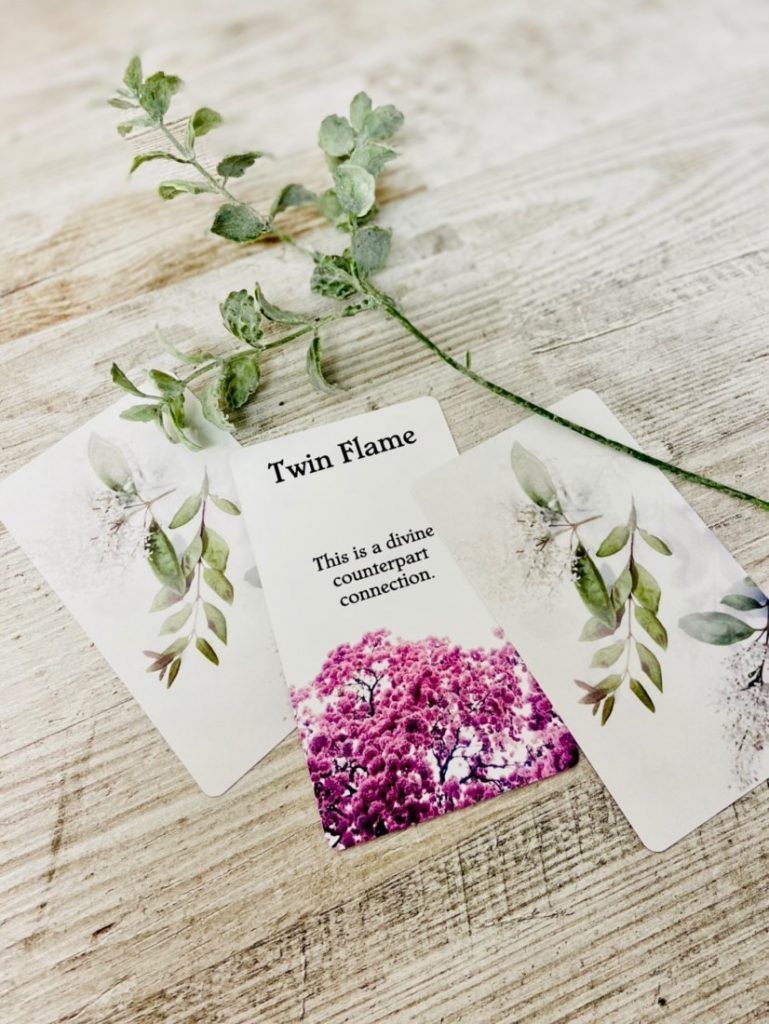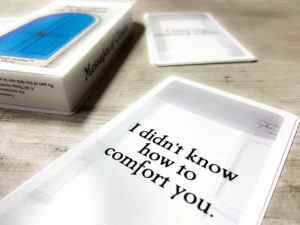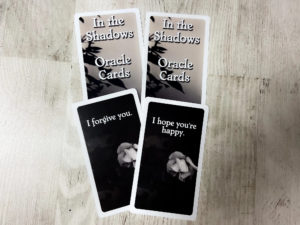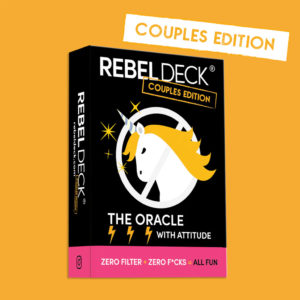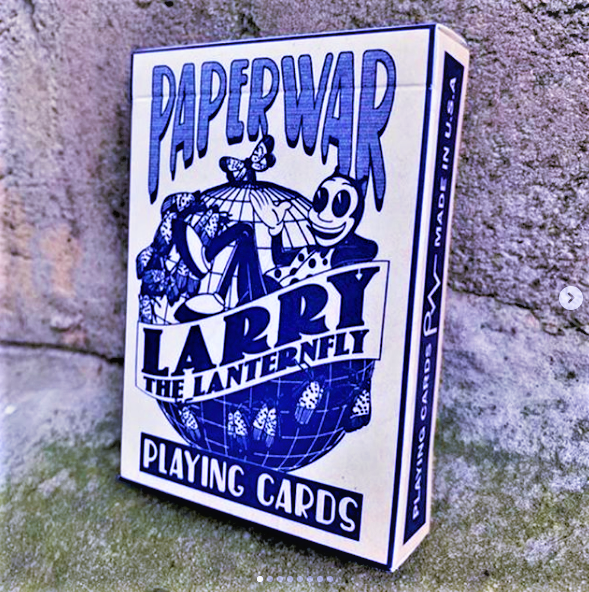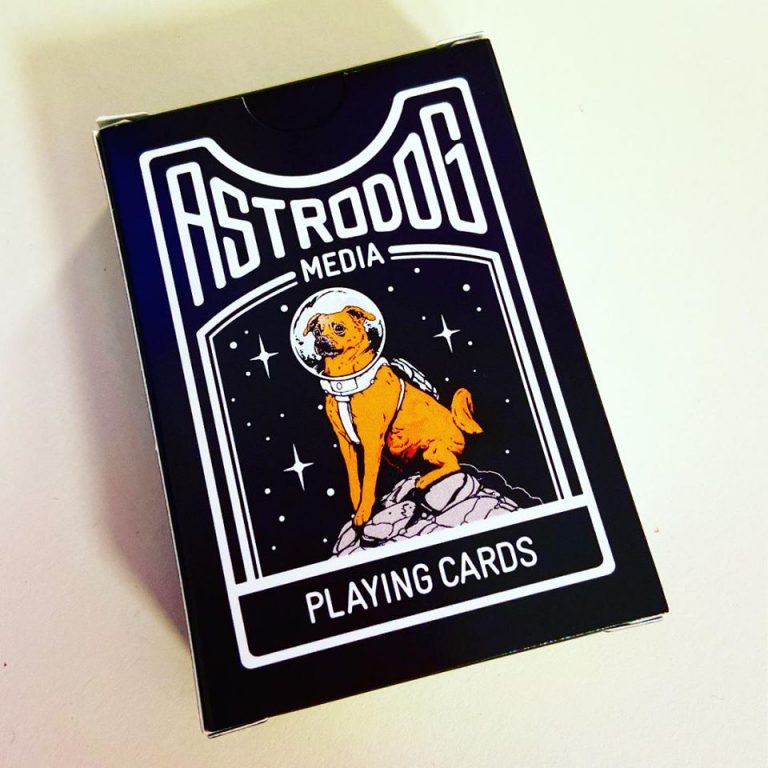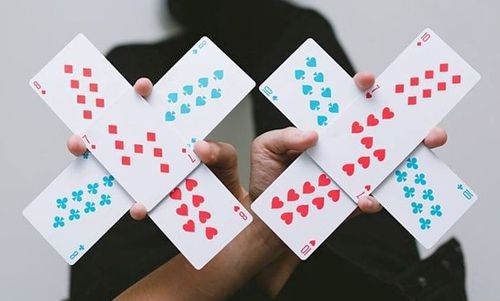 Ah, the sweet smell of a brand new deck. There it is, a fresh arrival in the mail, now waiting on your kitchen table. It is taunting you in its shiny cellophane, begging to be opened. Inside, as you know, is the joy of discovery, the smell of newness, the feel of brand new playing cards, and the promise of future experiences. You can hardly wait!
But do you need to break in your new deck first? If you want the handling to be smooth, are there any special steps you need to take to get your deck into optimum working condition for peak performance? And if so, what is the right way to do that? In this article, we’ll consider and explore this topic.
Ah, the sweet smell of a brand new deck. There it is, a fresh arrival in the mail, now waiting on your kitchen table. It is taunting you in its shiny cellophane, begging to be opened. Inside, as you know, is the joy of discovery, the smell of newness, the feel of brand new playing cards, and the promise of future experiences. You can hardly wait!
But do you need to break in your new deck first? If you want the handling to be smooth, are there any special steps you need to take to get your deck into optimum working condition for peak performance? And if so, what is the right way to do that? In this article, we’ll consider and explore this topic.

DO YOU EVEN NEED TO BREAK IN A DECK?
Whether or not you even need to break in a deck depends on a number of factors.1. Are you a professional magician, about to perform a gig?
If so, then it’s not likely that you want your first experience with a new deck of cards to be on stage in the middle of a performance or when you’re on stage. Ideally, you’ll want to have at least given it a short test drive in advance, just to make sure it feels right, and has that gently worn and familiar feeling, so that it won’t cause any issues during your performance. The last thing you want is a couple of cards to be stuck together, or to find some other issue with the deck. Obviously magicians won’t want to perform with a tired and worn deck that is full of grime, because it makes a poor impression, so it is professionally important to use a deck that is brand new or near new. But when using that new deck, you don’t want to have to worry about a less than optimal performance, so you do want it handling as best as it can from the moment your performance begins. You certainly don’t want to be spending precious minutes fiddling with cellophane wrappers, or getting rid of the standard “new deck order”. And are the cards too stiff? Too slippery? These are the two main issues you may find with a new deck, and are the kinds of things that you can address by breaking in a deck. For many professionals, it will be a personal thing as to whether or not a deck performs exactly the way you want fresh out of the box, or whether you prefer the slightly different handling that results from a slightly worn deck. But for the rest of us, unless our first drive with our deck is at some official event, the need to “break in” a deck is much less necessary. It will get broken in naturally simply by using it, so just go right ahead and put it to work. It’s not like some new car that you need to handle gently for the first few kilometers, nor are you like a test pilot nervously taking a brand new plane on its first flight. Little can go wrong, and if you just use the deck for what it is intended for, everything will work out fine.2. Who is the publisher, and what kind of deck is it?
Decks from some publishers will perform just beautifully straight out of the box, and this can also depend on the card stock that is used. Many cardists like using a deck that feels soft, and typically a deck will become softer by sheer use, as pressure is applied to the cards in the course of shuffling and handling. A USPCC deck with their “Thin-Crush” stock will have this feel immediately from the box, whereas a deck with their thicker and higher grade Casino Bee stock may require some wearing in before the cards feel softer. The B9 True Linen stock from Cartamundi also has a very soft feel from the box as well, and many cardists will just love how this feels from the get go. In contrast, LPCC/EPCC decks with the Diamond/Master Finish will have a much stiffer feel from the outset, and this sense of snap and firmness isn’t likely to change much despite intense use of the cards, given that these are intended to be much harder wearing and longer lasting cards. All this means that whether or not there’s a need to break in a deck can depend on how it handles straight out of the box, which can vary according to the publisher and the kind of deck it is. So let’s talk about the typical USPCC deck a little more, since that represents by far the majority of decks. Decks with their standard Bicycle stock and with their higher grade Casino Bee stock will both become softer over time, so it can be helpful to wear these in if that is important to you. This is largely a process that will occur naturally as you use the cards, so there’s no need to artificially wear them in as such. But if it is very important to you that all the cards arrive at the same degree of softness at the same time, you might want to systematically go through a series of moves that puts all the cards through their paces in the same way. Certain decks will also be more slippery when they are first used, which is a result of the coating on the cards. Some use will see this wear slightly, and the cards won’t quite slide as freely as they did initially, which is another reason some magicians will want to break in a deck first. On the other hand, other decks may perform worse over time, although this will largely be with decks from inferior publishers. These may appeal to spread and fan smoothly immediately from the box, but over time can quickly start clumping and be inconsistent.3. How do you like your deck to feel and perform?
For most people, a deck will slowly change its feel as it gets used. In some cases, a deck may perform worse as it wears, and fans and spreads that were initially super smooth and consistent may start becoming clumpy or less than optimal. But generally speaking, as a deck becomes slightly softer it can become more pleasant to use, and sometimes this can even mean that fans and spreads can improve. It also can become less slippery, and the cards will actually spread and fan a little more consistently and pleasantly. One thing about USPCC produced cards is that the edges of the cards can be somewhat rough after the cutting process. You can feel this by running your hand alongside the edge of a brand new deck, especially if you compare it to the super clean and smooth cut of a LPCC/EPCC produced deck. This will wear smoother with time, but there are things you can do to speed up this process.Recommendation
To summarize, a deck that has been worn in slightly will generally perform better than a brand new deck – although there are exceptions. Cards will be less slippery, and spread evenly and smoothly, springs will be easier due to the cards being softer, faros will be more consistent (in both directions), and packets and double lifts can be formed more cleanly. This will happen naturally over time with any deck, so in many cases you don’t need to do anything special – just go ahead and enjoy the cards, and they’ll wear in automatically as you use them. But sometimes you do want to accelerate that process for performance reasons.
HOW SHOULD YOU BREAK IN A DECK?
So suppose we do want to break in our deck, how should we go ahead doing that? Let’s imagine that our deck is still staring at us from the kitchen table, grinning at us from within its cellophane. So let’s begin right at the start of the whole process, and list some steps that we can do.Step 1: Preparation
So what do we need to get started? ● Be clean. You didn’t see that coming did you? There you were, with your grimy hands, all ready to rip into your brand new deck, and you almost forgot this important step! Go ahead and wash your hands – and dry them thoroughly! The oil on your hands, and any grime that might be invisibly clinging to it, will quickly transfer to your brand new cards, and before you know it they will start looking grimy as well. So it’s important to get rid of any sweat, dust and dirt that your hands might be carrying, and give your new deck the very best start it can, rather than throwing mud at it on its first test drive! ● Get your tools. Don’t worry, you won’t need a hammer or any heavy equipment! But a sharp knife will come in handy shortly, in order to do a neat and tidy job of opening the seal.Step 2: Opening the Tuck Box
You didn’t really think that the cards magically pop out of that wrapped box do you? This process involves several steps: ● Cellophane. We begin by opening the cellophane, or shrink-wrap as it’s sometimes also called. Rather than ripping this from the top or bottom, I usually like to pull the tab provided for this around the deck. What this does is divide the wrapper into two halves. I typically remove the smaller top half, but leave the larger lower half on the deck. This provides additional protection to the tuck box, helping it stay in shape, and preventing the corners from becoming dinged up or tearing. But not too much can go wrong when removing the cellophane – unless you’re using a knife, in which case be careful that the sharp blade doesn’t slip and leave an unplanned but permanent tattoo on your skin or on the tuck box! ● Seal. Now for the seal, which is the adhesive sticker on most decks that keeps the deck closed and needs to be opened in order to open the top flap. Again, there are wrong ways to do this. Rather than just tear this in any fashion, I like to preserve the seal as best as possible. With a custom deck, the seal has often been thoughtfully and deliberately designed with unique artwork to fit with the rest of the deck, and it’s nice to preserve as much of that as possible. Cutting it parallel with the top of the deck along the upper flap is less than ideal, because it means you’ll invariably have part of the sticky side of the seal facing inwards, where it will occasionally attach itself to a playing card, and over time accumulate dust and dirt. Instead, it’s often best to get a sharp knife, and cut the seal right along the semi-circle shape. In a pinch, you can use a thumb nail to do this. But the result will be very neat and tidy: when the tuck box flap is closed, you’ll see the two parts of the seal come together in entirety, and there’s the added advantage that you won’t be leaving any sticky surfaces around to attract grime. ● Top flap. Ideally you want to bend the top flap backwards. There is usually a line about 1cm below the top flap, which has been pressed into the deck during production, and that’s where you want to bend the top flap backwards – not at the very top of the deck itself. What this does is reveal the top centimeter of the cards, making them easy to grab. If you don’t do this, and the cards are somewhat of a tight fit in the tuck box, you may find yourself butchering the top of the case trying to get the deck out.Step 3: Removing the Cards
Wait, do we really need a whole step that explains how to remove the cards from the tuck box, and do I really think you have an IQ lower than an Ace of Spades? I’m sure you’re bright enough – after all you’re reading this! – but the truth is that you can butcher this part of the process as well. ● Take out the cards. If you have pushed back the top flap at the line described in the previous step, you should be able to get your fingers on both sides of the top of the deck. The most natural way to do this is to have your thumb on one side of the deck in the semi-circular thumb tab (another reason for not cutting the seal directly across the top!), while your forefinger grabs the other side of the deck along the top centimeter of the cards that has been revealed when you bent the top flap of the tuck box backwards. Now you can just pull the cards out, but even that can be a little tight at times. Get gravity to help, and tip the box over, so that the cards fall naturally into your hand. Don’t forget to inhale that new deck smell – that’s not something you want to miss is it? Breathe in deeply, and smell those new cards – you know you want to! This is also a good time to remove the ad cards, so that what you’re handling is a 54 card deck without unnecessary extras. ● Smooth the edges. In the case of a USPCC produced decks, the edges of the playing cards of a brand new deck will feel noticeably rough. While this can improve over time, you might want to take your deck and rub all four sides a number of times against some fabric – denim jeans are perfect. This will remove any loose bits and can help reduce some of the roughness.
Step 4: Conditioning the Cards for Optimal Friction
Some swear that there’s a particular order of steps that must be followed when breaking in a deck in terms of how you handle the cards for the first time once they’re outside the box. Personally I fail to see how the order of what follows matters too much – although I wouldn’t begin with a riffle shuffle or spring for reasons I’ll explain in a moment. So here are the moves you should consider doing to make your cards perform better than when you have them in your hands for the first time. First of all, you want to give your cards a workout to help ensure optimal friction. These first moves are geared to ensure that the cards slide smoothly over each other. Cards have a coating that is designed to optimize how they glide over each other, but in the factory the cards have just been produced and never actually rubbed over each other, so there may be some small imperfections. We want to make sure that with the help of some warmth, wear, and pressure, everything is in good order and sliding smoothly and evenly. A helpful way to think of this is that you are polishing the cards by rubbing them against each other. ● Overhand shuffle. Shuffle off all the cards one at a time, to ensure that all the cards move freely, and there are no clumps of cards sticking together. It’s important to make sure that all the cards are properly separated. ● Wash. At this point some people recommend “washing” your cards. No, don’t get out the soapy water! A wash refers to spreading all the cards on the table, crudely overlapping each other, and shuffling them around over each other. The term “granny shuffle” is also used for this method. Personally I think that a systematic series of overhand shuffles accomplishes the same thing, is neater, and does a better job of looking after your cards, but you might find it more satisfying and effective to give your cards a “wash” as just described. ● Fan. A few fans are now the order of the day, in both directions. The idea of this and the previous step is that you get the cards sliding over each other every which way. If you did the above steps face up, now repeat them face down. This ensures that each card has gone through its paces in each and every direction, from both sides.Step 5: Conditioning the Cards for Optimal Flexibility
But cards don’t only need to slide over each other smoothly, they also need to be able to flex in different directions. If they were stiff and rigid like wooden boards, there’s no way you could handle them at all, so we want to make sure that they are malleable and soft. That’s something that the printing process won’t do for us by bending them in different directions to soften them up, but fortunately it’s something we can easily do, by giving the cards a workout to help ensure optimal flexibility. These next moves are geared to ensuring that the cards flex properly, and return back to their natural shape easily and quickly. I strongly suggest doing these steps after the ones just described to get optimal friction, because when sliding the cards across each other, you don’t want them to be previously bent as a result of riffle shuffles or springs. Although if you find that your deck is warped out of the box, these flexibility routines will help straighten it out, so you may need to adjust the order of things. ● Aeration. This is simple and interesting “flex-ercise” in which you hold the deck similar to the beginning of a spring, squeezing both ends towards each other. This causes the deck to bend into a C shape, and you’ll notice the cards all separating from each other with a layer of air between them. This helps separate the cards, and helps prevent the oil or coating causing them to stick together. Do this in both directions. ● Riffle shuffle. Now it’s time for a good riffle shuffle, since not only do you want the cards sliding smoothly over each other, but you also want them flexing nicely. Do this both face up and face down, completing each shuffle with a bridge, so you don’t end up with bent or warped cards, and so that the cards are flexed in both directions. ● Faro shuffle. Another good move to do at this point is a faro shuffle. Given the new deck order, the central place that splits the deck exactly should be even easier than usual to find – for most standard decks it will be right between the King of Clubs and King of Diamonds. You can complete the shuffle by bridging the cards, or by cascading the cards together if you know how to perform that flourish. A faro shuffle will also tell you immediately whether or not a deck has a traditional cut or a modern cut, depending on which way you need to weave the cards together for the faro shuffle. ● Spring. Just like a riffle shuffle, a couple of good springs will help, and be sure to do these in both directions (face up and face down). To round things off, you might want to conclude with another series of overhand shuffles, just to make sure that the factory coating has had another pleasant polish and final warm up, so that it can behave optimally.


